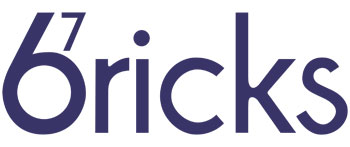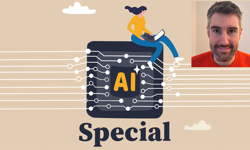
Q: Why was the launch of ChatGPT so significant?
A:
Before ChatGPT’s public release, Generative AI’s (GenAI) barriers to use meant its adoption was limited. But when ChatGPT put cutting-edge technology directly in the hands of consumers via a natural language interface, interest and utility exploded. It demonstrated a range of advanced text generation capabilities, from content creation, to writing code, and answering factual questions, and the world ran with it. That’s why ChatGPT reached 100m users in just two months. The accessibility and capabilities of these models mark the commoditisation of AI and have sparked board and political discussions worldwide about AI strategy and ethics.Q: How have smart publishers reacted?
A:
Firstly, they’ve quickly identified GenAI as a disruptive technology. From there, they’ve started assessing current and likely future capabilities by engaging with experts and colleagues in the wider information space.But that speed doesn’t mean being purely reactive – smart publishers have sought to define AI governance structures that enable safe experimentation for their teams. By supporting access to this technology, their staff will be well-placed to build their skills, understand AI’s limitations, and then identify innovative applications for their own organisations.
As well as leveraging the technology internally, savvy publishers have looked outwards. That means understanding how their customers are likely to change their behaviour, and how those changes will shape evolving user expectations for future product development.
Q: How do you see the technology evolving over the next 12 months?
A:
Most urgently for publishers, there is a choice to be made as to how they will best maximise value from their content. Some will sign licensing deals with the GenAI products already in existence, while others may choose to focus on creating must-have information products for their users which cannot be replicated elsewhere with publicly available data. Investors are increasingly interested in this space, which only increases the pressure on publishers to have well-developed data strategies to guide them.In the technology space, we will see models from Meta and Google beginning to close the gap on ChatGPT, but parity with the rest of the GPT products (GPT-4 and Turbo, both of which are paywalled) is a tall order and OpenAI is already developing a new version likely to far exceed their current capabilities. OpenAI itself will be fighting to keep its first-mover advantage as well as making big moves in content licensing, like its recent deal with Axel Springer. For all these companies, ensuring reliability and uptime will become increasingly important as GenAI services are integrated routinely into other companies’ products.
More widely, I think AI is only going to become further embedded in work and society, through richer integration with familiar productivity tools, together with frequent contact with AI-powered services. There will also be pressure to use AI to address gaps in the workforce; in concert, this may trigger a degree of AI backlash and a resurgence of premium “human-centric” branding.
Q: What types of AI project are likely to deliver the best ROI for publishers?
A:
Whilst disruptive, GenAI technology is relatively immature. Publishers should invest time and resources in projects which seek to streamline and support internal processes, automating rote work whilst maintaining human intervention and validation.The power of GenAI is that it makes it easy to create, use, and test smart systems that can do a lot with just a little bit of information. Publishers should therefore focus energy on outcomes, not inputs. Projects rooted in valid use cases, with baseline metrics to quantify performance, are likely to be more successful than open-ended experimentation.
As customers become increasingly familiar with AI, there will be an expectation for AI-powered user interfaces. We can see this already in search products (perplexity.ai), research tools (elicit.org, Scopus AI) and personalised tuition (Khan Academy). By looking outwards, publishers can understand the direction of travel, and move to develop public-facing applications that meet a paradigm shift in user expectations.
Q: Everyone talks about ChatGPT – what else should publishers be aware of?
A:
It’s easy to get sucked into the hype around OpenAI’s ChatGPT, but publishers should make sure they are mindful of the wider AI landscape. When embarking on an AI project, they should investigate OpenAI’s competitors (like Llama 2 from Meta, or the MoE models from Mistral), and assess whether existing technology can do the work. After all, despite its power, ChatGPT also carries risks around both what happens to the data that is fed into it, and its fallibility for malicious prompts which can undermine security instructions it is given.If you are looking at purchasing a product powered by a large language model (LLM), a good understanding of the underlying technology will help you gauge what value you are getting over building the solution yourself. It’s also true that whilst you can solve many problems by using an LLM, AI is not a new field, and there may be cheaper, battle-tested technologies that are better suited for the task in hand. The key is understanding your goals and working from there, sustainably integrating new technology to ensure it truly adds value to your company.

67 Bricks provides technology consultancy and full-service product development for information companies.
Email: simon.epstein@67bricks.com
Web: www.67bricks.com
In the March / April issue of InPublishing magazine, 67 Bricks’ Will Bailey and Jennifer Schivas will be doing a deep dive into creating blended content and data products.










